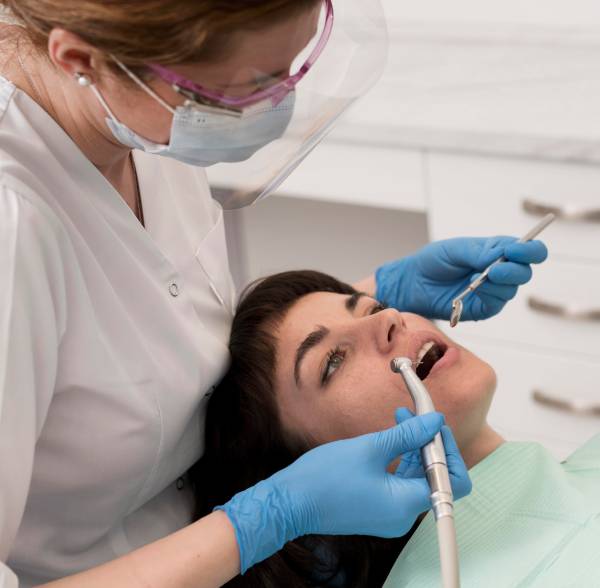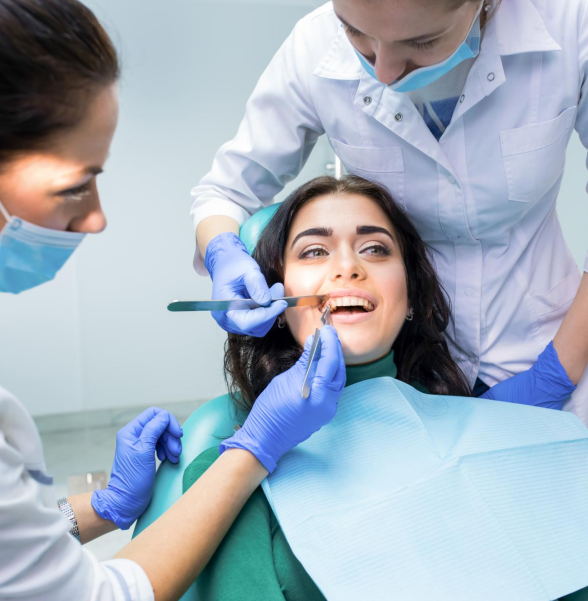Dental Extractions
Teeth need to be extracted (removed) when they are severely decayed or infected. Other reasons for dental extractions include impacted teeth, dental abscesses, orthodontics (extracting teeth to create space to move the other teeth around), or extractions due to trauma.
Procedure
Dental extractions are usually straightforward and can be performed in the dental chair while awake, using local anaesthetic injections. Some teeth are more difficult to remove and will involve cutting the gum, use of a surgical to get the tooth out, then stitching the gum back in place. This is known as a surgical extraction. If having a surgical extraction, multiple teeth removed, or if dental phobic, your surgeon may recommend a general anesthetic, or sedation (twilight sleep) for the procedure.
Downtime
The amount of downtime after a dental extraction will depend on the number of teeth removed and how much surgery was involved with their removal. Taking the rest of the day off work or school is all that may be required after the removal of a single tooth. Up to a week may be required if multiple teeth have been removed. During this time a soft diet is advised in addition to avoiding alcohol and cigarette smoking.

You can expect to have a little oozing of blood for a short time afterwards (up to eight hours) following an extraction. There will be some swelling of the face on the same side where the tooth was removed. Ice packs will help during the first 24 hours.
You may notice some or all of the following after the operation; these are common and do not necessarily indicate a complication:
- Bruising of the face and neck on the side operated on;
- Stiffness of the jaw muscles making it difficult to open the mouth for up to a week;
- Dryness and cracking of the corners of the mouth where they have been stretched during tooth removal. Application of a strong moisturiser (such as Vaseline) to the lips will make them more comfortable;
- Tenderness of the adjacent teeth for a short period of time;
- There may be a cavity where the tooth was removed. This should be kept as clean as possible with either warm salty water or a mouthwash. This cavity will fill in with time;
- Numbness of the lip, chin, and tongue for a few hours after the procedure. This is because local anesthesia has been used to make you feel comfortable during and after the surgery;
You may be prescribed painkillers, anti-inflammatories, or antibiotics after the procedure.
All surgical procedures have risks, however the majority of people having dental extractions will not have any complications. The most common complications are post-operative bleeding and infection. To reduce the risk of infection your surgeon may prescribe antibiotics.
In rare situations, there may be a change in sensation, numbness, or tingling of the lip, chin, gum, or tongue which is often temporary but occasionally permanent. In some cases, the taste of food may be affected. This is due to the proximity of nerves to where the teeth are. If the nerve is injured it will usually recover within twelve weeks but can take up to 18 months.
After a dental extraction, a blood clot will form in the bone where the tooth was removed. This blood clot is important for appropriate healing and relief of pain. If this blood clot is washed away the bone becomes exposed causing a constant, throbbing, and radiating pain. This is known as a dry socket. This can be easily treated by contacting your surgeon. You can prevent a dry socket from occurring by not rinsing on the first day of surgery, and not smoking for at least two weeks after surgery.
Other potential complications include damage to adjacent teeth, sinus problems, difficulty opening your mouth, temporomandibular joint problems, and poor or prolonged healing. Though exceedingly rare, there is also the possibility of an allergic reaction to the medications administered.

